November, 1961
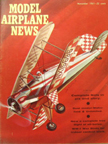
Bucker Bu 133-C "Jungmeister"
Model Airplane News Cover Art for November, 1961
by Jo Kotula
Click to Enlarge
The Bücker Bü 133 Jungmeisterr (Ger:"Youth master") was a single-engine, single-seat biplane of wood and tubular steel construction and covered in fabric. It was developed useful to support claims of technological superiority made by the Reich's propaganda machine In short, the Jungmeister was designed to win. It was Germany's bid to dominate world aerobatics competition. And it often did. The Jungmeister was for years considered the finest aerobatic aircraft for training and competition ever built until the advent of higher performance aircraft of the post World War II era. Designed by Carl Bücker and produced in Germany for the Luft Sports Bund ("Air Sport s Club"), it became the advanced aerobatic trainer for the future fighter pilots of Hitler's Luftwaffe. Almost every German pilot who flew against the Allies during World War II earned his wings in a Jungmeister. Powered by a 160 hp Siemens SH 14A4 radial engine, the Bücker's combination of excellent control effectiveness and light control pressures made it popular in aerobatic competitions around the world. A lithe 925-pound ballerina, the Jungmeister was then and is now the standard by which snap rolls, for instance, are measured. In that maneuver, it was totally predictable and wonderfully controllable. And that was just one of a long list of stylistic moves the Jungmeister had up its wire-braced sleeves. Names like Alex Papana and Count von Hagenberg made the airplane popular on this side of the Atlantic in the late 1930s just before everything German became decidedly unpopular.
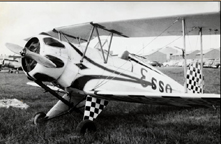
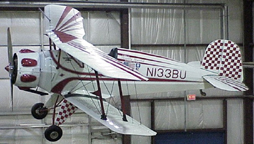
Bucker Bu 133-C "Jungmeister"
Click to Enlarge
However, the Jungmeister made inroads in the USA for American fliers as well.
At this point, we introduce you to Beverly E. ("Bevo")Howard, a native of Georgia. In 1930, at the age of 16 he learned to fly and helped pay for flying lessons by making parachute jumps and selling airplane rides. Soon afterwards, he bought his first airplane, an OX-5 Waco 10, with money saved from a newspaper route. In 1932, he quit junior college in his freshman year to join the newly established Hawthorne Aviation at Charleston, South Carolina, starting as a line boy at $10 a week. By 1936, at the age of 21, he had become President of Hawthorne. Between 1936 and 1938 he joined Eastern Airlines, becoming the youngest commercial pilot in the nation. Seeing a bright future for commercial aviation and flight training, he laid the groundwork for Hawthorne's expansion. Between 1939 and 1943, Hawthorne conducted flight training for The College of Charleston, The Citadel, and the University of South Carolina.
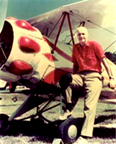
"Bevo" Howard and his Bucker Bu 133-C "Jungmeister"
Click to Enlarge
In 1942, he demonstrated to the U.S. Army the operational utility of light aircraft in modern warfare, artillery spotting, air rescue and other purposes under combat conditions. Howard had received a contract to operate a primary flying school for the Army Air Force at Orangeburg, SC, which was in operation until the end of World War II. During that time, some 6,000 combat pilots were trained, of whom more than 2,000 were French Air Force students. For his leadership, Bevo Howard was presented the French Air Force Wings, the coveted French Medaille de L'Aeronautique, and later the Ordre National de la Legion D'Honneur for his pilot training and accomplishments as an aerobatic flyer. Two classes of Pakistani cadets were trained by Hawthorne at Jacksonville in 1948-49 and 1952-53. In January of 1951, Hawthorne was awarded a contract by the U.S. Air Force to operate a primary flying school at Spence Air Base in Moultrie, Georgia. Approximately 10,000 pilots were trained in 10 years, with students from 32 countries.
A rare combination of pilot and businessman, "Bevo" became interested in flying air show exhibitions in 1933 and had flown in the U.S. and abroad before millions of air show spectators and television viewers. He held six first-place championships for precision aerobatic flying all in Jungmeister. In 1939, 1940 and 1941, he won the National Lightplane Aerobatic Championships. He copped top honors in the International Aerobatic Championship for all classes in 1946-47 and placed second in 1948 and 1950. Though his exhibition flying was just a hobby, he was once the highest paid air show pilot in the country.
Here is a video of the Bucker Bu 133-C "Jungmeister" in action:
Click Here for more information about the Bucker Bu 133-C "Jungmeister".
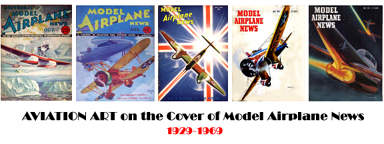
Click to go back and select another cover.
Counter for the Entire Site (not just this page..)
Home | About Lindy | Last Week's Reviews | Upcoming Events | 1940s Collecibles
The Guide - Establishments - Travel - Accessories
Music | Links | Photo Gallery | Extras | Contact